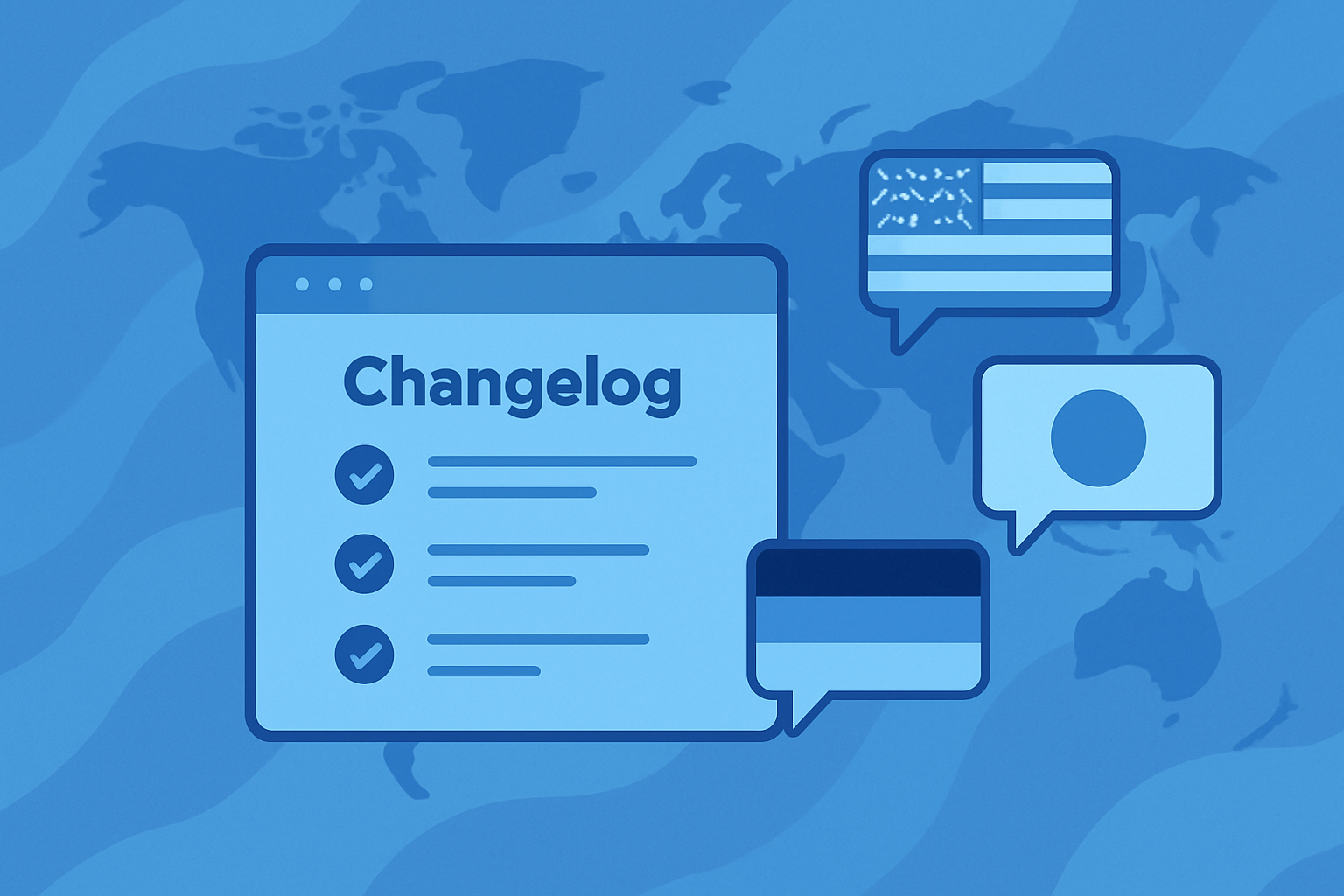Key Takeaways
- Localization is essential for engaging global users and driving feature adoption.
- Use tools like SimpleDirect to make multi-language changelogs easy to manage.
- Adapt your updates to regional preferences for maximum impact.
- Start with high-priority updates, then expand localization efforts as you grow.
Introduction
As companies expand globally, one key challenge arises: communicating product updates effectively to international users. A changelog is a critical part of product communication, but if it’s only written in one language, it can alienate non-native speakers, disrupt feature adoption, and create unnecessary confusion.
In this guide, we’ll cover:
- When to localize your changelog
- Tools to make translation easier
- Regional communication preferences
- How SimpleDirect’s multi-language support can simplify localization
Why Localizing Your Changelog Matters
The Impact of Localization
| Metric | Without Localization | With Localization |
|---|---|---|
| Feature Adoption Rate | 40-50% | 60-70% |
| Support Tickets (per update) | 100+ | 25% decrease |
| User Retention (Global) | 70% | 85% |
Localization ensures your product updates resonate with all users, regardless of language or location. Here’s why it’s critical:
- Boost Engagement: Users are 72% more likely to engage with content in their native language (CSA Research).
- Drive Feature Adoption: Clear communication eliminates confusion, helping users understand and use new features.
- Reduce Support Tickets: Proactively answering questions in localized changelogs reduces repetitive support requests.
- Build Trust Globally: 76% of consumers prefer buying from brands that communicate in their native language.

When to Localize Your Changelog
1. Significant International Audience
If more than 25% of your users are from non-English-speaking regions, it’s time to localize.
2. Major Updates
Prioritize localization for:
- Feature launches
- UI redesigns
- Pricing or policy changes
3. Compliance Requirements
In regions like the EU, offering updates in local languages may be legally required.
Localization Tools for Changelogs
Localizing changelogs doesn’t have to be complicated. Here are tools to simplify the process:
| Tool Type | Popular Options | Best For |
|---|---|---|
| AI-Powered Translation | DeepL, Google Translate | Fast, affordable translations for basic updates |
| Localization Platforms | Crowdin, Transifex | Collaborative, automated workflows for teams |
| Human Translation Services | Gengo, One Hour Translation | High-quality translations with cultural nuance |
Regional Communication Preferences
Localization goes beyond translation. Adapting your changelog to regional preferences ensures your message resonates.
Key Areas to Adapt
- Tone and Formality:
- Formal Regions: Japan, Germany (Use precise, professional language)
- Casual Regions: USA, Australia (Friendly, conversational tone works best)
- Date Formats:
- USA: MM/DD/YYYY (e.g., 11/17/2025)
- Europe: DD/MM/YYYY (e.g., 17/11/2025)
- Asia: YYYY/MM/DD (e.g., 2025/11/17)
- Cultural Sensitivity:
- Avoid colors or idioms that don’t translate well (e.g., red for danger vs. celebration).
- Compliance:
- In the EU, updates may need to be localized for legal reasons.
How SimpleDirect Simplifies Localization
SimpleDirect’s multi-language support makes changelog localization seamless. Here’s how:
- Create Multi-Language Updates: Manage translations for each update in one interface.
- Integrate Tools: Sync with platforms like Crowdin or Transifex for automated workflows.
- Track Engagement: Analyze metrics like open rates and feature adoption by region to refine your strategy.
Case Study:
A SaaS company using SimpleDirect localized their changelog into French, Spanish, and German. The results:
- 25% increase in feature adoption among non-English-speaking users.
- 15% reduction in region-specific support tickets.
- Faster rollout of updates across 10+ countries.

How to Get Started
1. Analyze Your Audience
- Use analytics to identify key regions and languages.
- Start with the top 2-3 markets.
2. Choose the Right Tools
- Combine AI-powered tools for speed with human translators for accuracy.
- Use SimpleDirect’s multi-language feature to streamline translations.
3. Start Small
- Focus on major updates first (e.g., feature launches).
- Expand to smaller updates over time.
4. Test and Iterate
- Track metrics like open rates, feature adoption, and support ticket volume.
- Use feedback to improve your localization strategy.
Next Steps
Ready to turn your changelogs into a feedback powerhouse?
SimpleDirect makes it easy to collect, organize, and act on user feedback—all in one place.
Get started with SimpleDirect today and build a roadmap your users will love.






